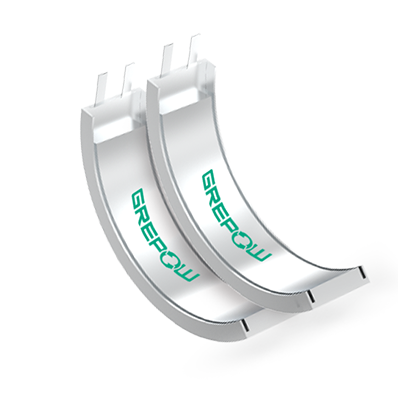Everything about storing your Lithium Polymer ( LiPo ) batteries | Battery Monday
Everything about storing your Lithium Polymer ( LiPo ) batteries | Battery Monday
Today’s topic will be focusing on maintaining your lithium battery; specifically, storing your lithium polymer batteries.
Introduction
Lithium Polymer batteries are widely used in wearable products, drones, radio control hobbies, industrial equipment, cell phones, laptops, and more. Over the years, lithium batteries have integrated themselves in our everyday lives. As such, it’s vital to understand the safe usage of Lithium Polymers especially so that you can avoid any accidents, fires, or early product failure.

Storage voltage
Here’s a good rule of thumb if you don’t plan on using your Lithium Polymer powered devices for a while: for a battery that’s removable, you should discharge the battery down to about the halfway mark or if there’s no external fuel gauge, then down to storage voltage of 3.8-3.85 volts per cell. For an integrated battery that’s not removable, you can leave it fully charged as the BMS board in your device will manage the battery, but remember, because the battery’s being monitored and managed, there will be a small load on the battery even if the device is off. Make sure you check on the device regularly to ensure that the voltage doesn’t drop too low.

LiHV
We’ve said this many times now in our Battery Mondays, but the maximum charging cut-off voltage of a regular Lithium Polymer battery is 4.2 v per cell while a LiHV can go up to 4.35, 4.4, or even 4.45V per cell. If you leave your battery at maximum voltage, you run the risk of decreasing the battery’s lifespan and causing your battery to swell.
Storage temperature
Temperature plays a large role in battery storage, the ideal temperature for storing your battery is 70 °F (21 °C). Don’t let the room temperature get too cold or hot. Low temperatures will cause the electrolytes to freeze, reduce the internal resistance, and may form lithium condensation at the cathode, causing irreversible effects. High temperature can accelerate some chemical reactions inside the cell to form gas, shorten the battery life, and seriously cause thermal runaway, fires and explosions. The side reaction products also accumulate on the negative surface, which causes a significant increase in the impedance of the SEI film.
Video
Battery Monday Channel
Grepow‘s Battery Monday Channel is about battery knowledge and battery tip. If you have any questions about this topic ( Everything About Storing Your Lithium Polymer ( LiPo ) Batteries ) or have any battery-related things you want to know, please feel free to contact us by email at info@grepow.com. We specialize in drone smart batteries, industrial batteries, shaped batteries, high discharge rate batteries, high voltage batteries, semi solid batteries, etc.
Our sub-brands Tattu and Gens ace focu on UAV batteries and RC batteries, respectively. Or if anything we could improve, email us, we will read the comment and provide a high-quality battery knowledge tutorial.
Grepow official website: https://www.grepow.com/
Grepow Facebook: https://www.facebook.com/grepowbattery
Grepow Linkedin: https://www.linkedin.com/company/2880306/admin/dashboard/
Related Articles
-

FAI World Drone Soccer Championships 2025 Conclude in Shanghai
2025-11-19 -

Grepow at Future Battery Forum 2025: Showcasing the Lithium Battery Innovation
2025-11-18 -

Powering Aerial Artistry: Grepow Battery Solutions Behind Drone Light Shows
2025-10-27
Related products
-

50C High Discharge Battery - High C Rate LiPo
-

Pouch Ultra Narrow Lipo Battery
-

Pouch Round Lipo Battery
-

Pouch Curved Lipo Battery
















































